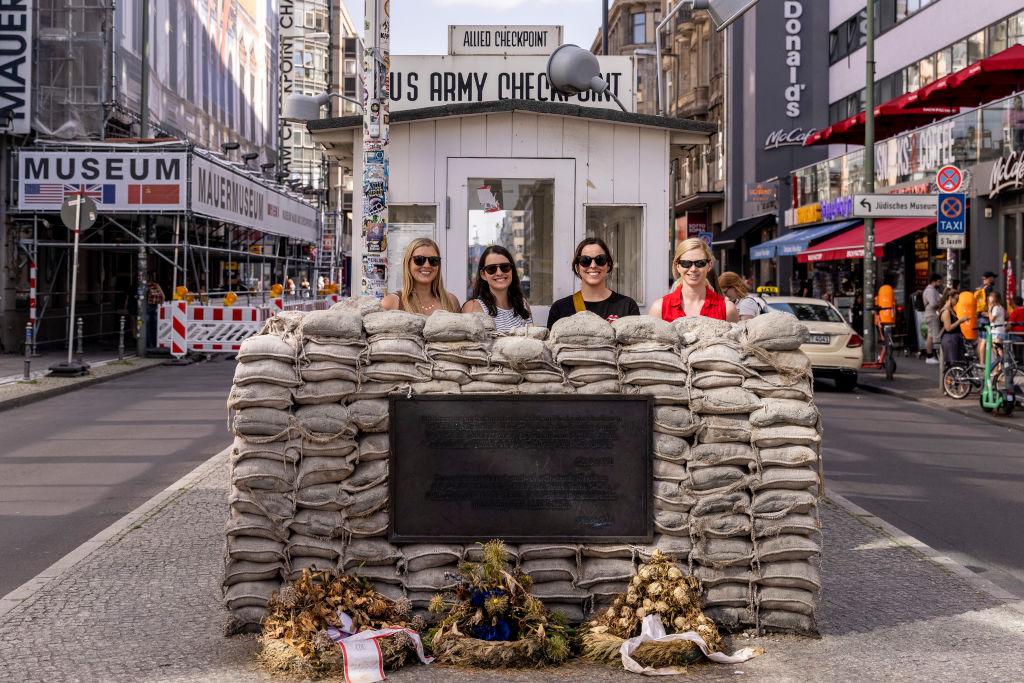It was hard to picture what this place looked like just three decades ago. Now, it’s vibrant and teeming with tourists streaming up and down the sidewalks, from museum to museum and shop to shop. On this sunny afternoon, I saw few reminders of what once divided this area. Nobody would think twice about crossing the street at Zimmerstrasse—except to be sure to look both ways, as the car and truck traffic on this busy street build steadily toward rush hour.
But striding along the eastern edge of the street, informative signs make clear that, for a good long time, this, right here, was the kill zone. Over the years, the East German government (officially the German Democratic Republic, or GDR) expanded its original wall to a roughly 18-foot “security strip,” with everything from tank barriers called “hedgehogs” to electrified fences and control towers at regular intervals. On the other side, ordinary Germans could come up and touch the wall, but to approach it from the east would mean big trouble, or even death, for those who dared.





